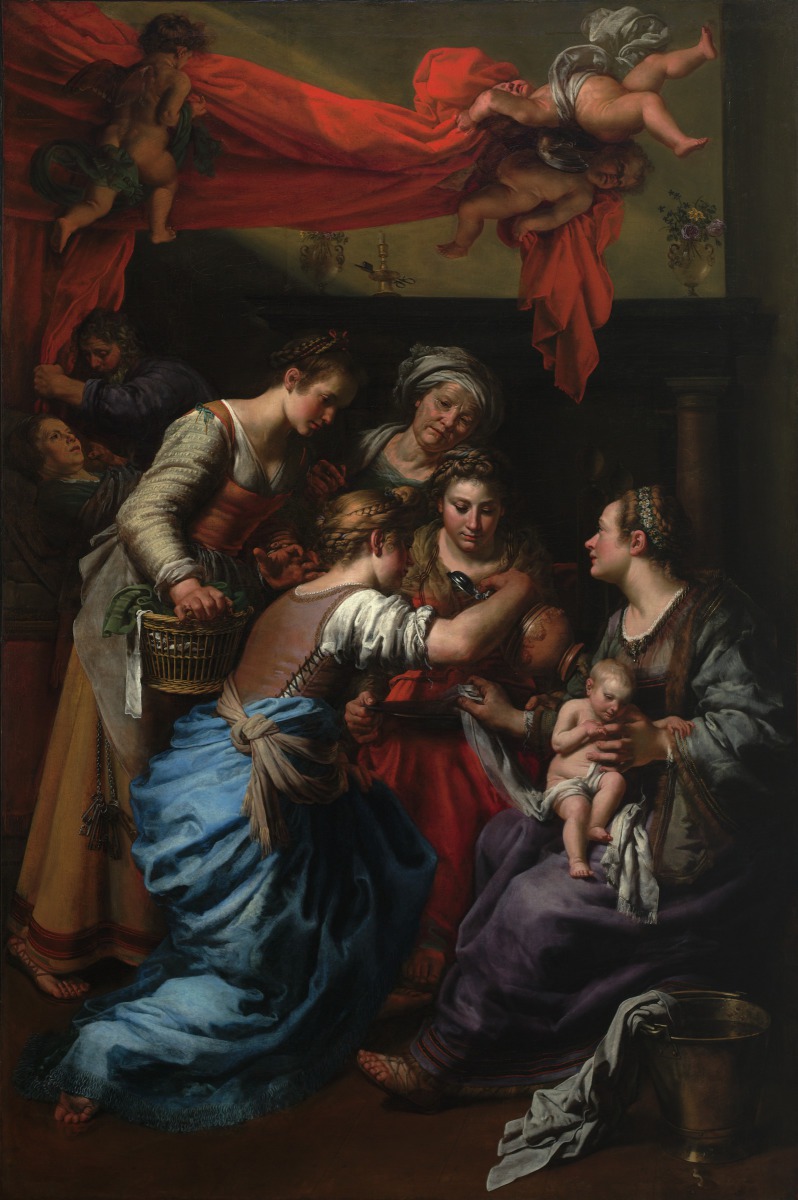
The Birth of the Virgin (Primary Title)
Theodoor Van Loon, Flemish, 1581/82 - 1667 (Artist)
Theodoor van Loon was born in Catholic Brussels and twice visited Italy. There, religious orthodoxy was balanced by a lively artistic scene and competition for commissions to decorate the many churches being constructed by the papacy and new religious orders dedicated to combating the Protestant Reformation. In style, van Loon’s large-scale religious paintings were influenced by the exuberant example of his Flemish compatriot Peter Paul Rubens and also by the dramatic realism and bold figures of Michelangelo Merisi da Caravaggio, both of whom had a strong influence in the Northern and Southern Netherlands.
Van Loon painted a number of series detailing the life of the Virgin for churches in present-day Belgium, but our painting and its pendant, the Adoration of the Shepherds (Museum of Fine Arts, Boston), may well have been painted in Italy. The down-to-earth style depicts Christian subjects in humble settings that reflect a contemporary effort to speak directly to the largest possible audience. Previously, Mannerist artists outdid themselves in representing such subjects in palatial settings that reflected lavish contemporary architecture. These painters also often chose obscure subjects that they vied to represent as subtly as possible, although the results often flabbergasted and annoyed critics who yearned for a more unaffected style of painting. Van Loon’s altarpiece can be seen as a successful and moving answer to this cry for sincerity and honesty.
Some object records are not complete and do not reflect VMFA's full and current knowledge. VMFA makes routine updates as records are reviewed and enhanced.
